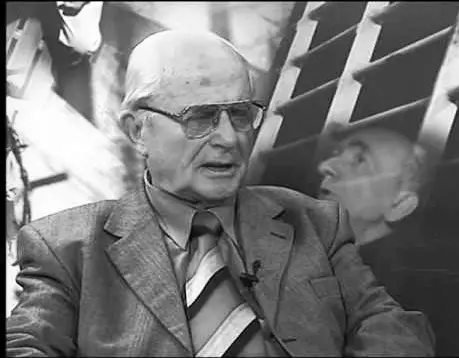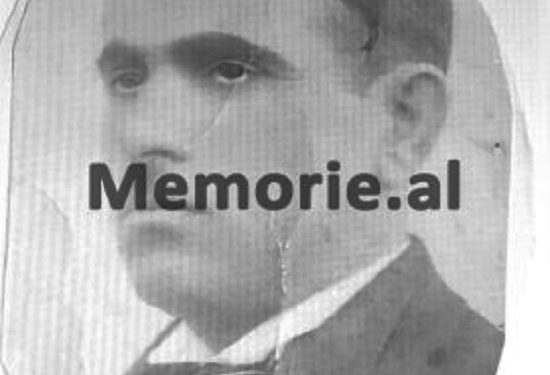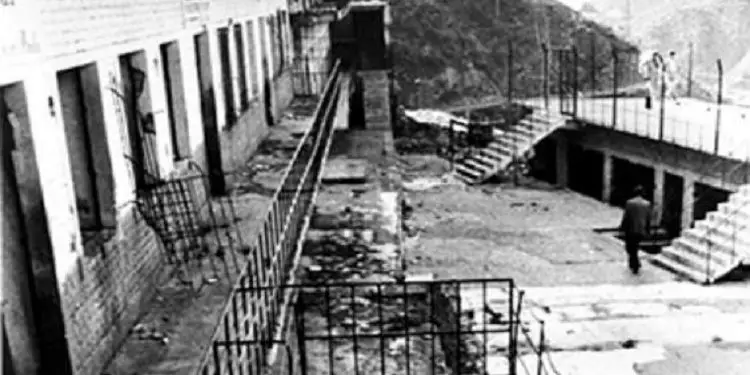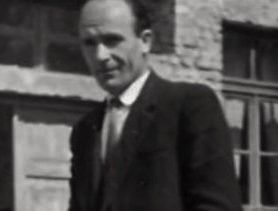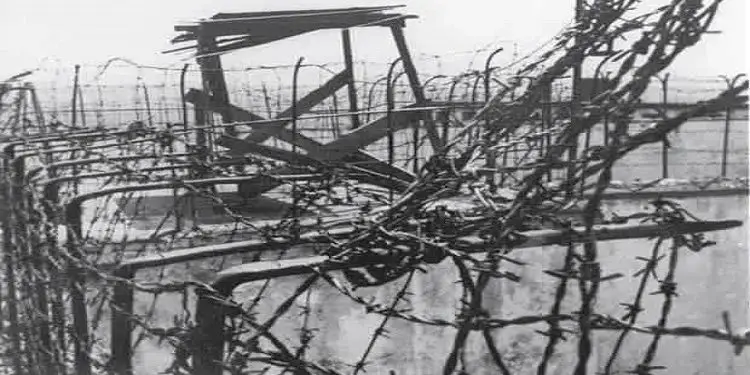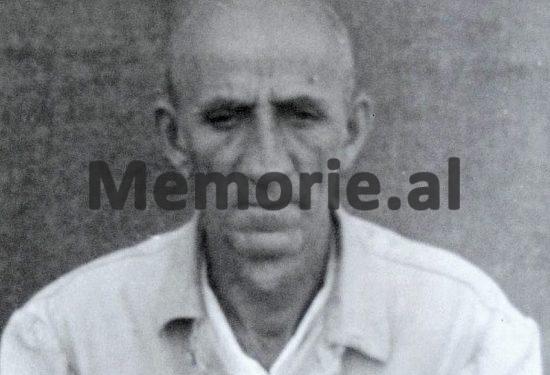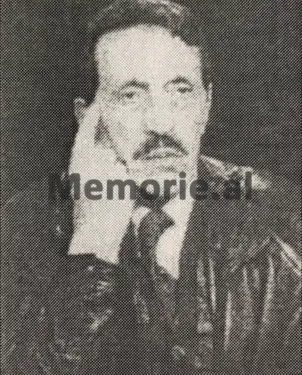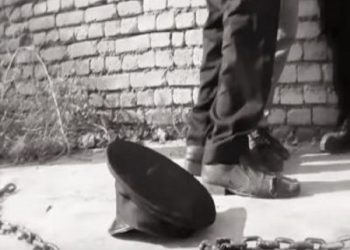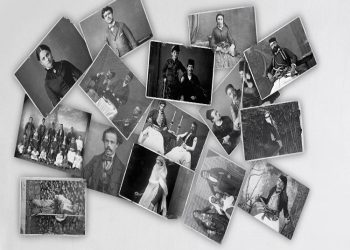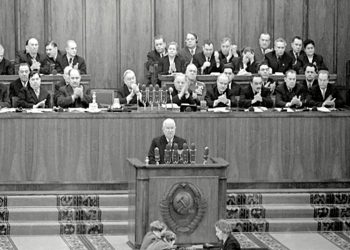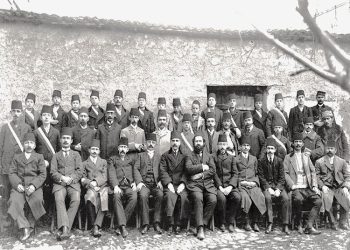From Agim Musta
The fifth part
Memorie.al / On the fourth anniversary of the passing away of the well-known historian, researcher, writer and publicist Agim Musta, (July 24, 2019), former political prisoner, his daughters Elizabeta and Suela, gave him the right to exclusivity for the publication, by the online media Memorie.al, of one of the author’s most prominent publications, such as the ‘Black Book of Albanian Communism’. This work contains numerous data, evidence, facts, statistics and arguments unknown to the general public, on communist crimes and terror in Albania, especially against intellectuals, in the period 1945-1991. The publication for the first time of parts of this book is also the realization of one of the bequests of the historian Agim Musta, who, from the beginning of 1991 until he passed away, for nearly three decades was engaged with all his powers, working to raise collective memory, through book publications and publications in the daily press. All that voluminous work of Mr. Agim Musta, concretized in several books, is a contribution of great value to the disclosure of the crimes of the communist regime of Enver Hoxha and his successor, Ramiz Alia. A good part of the publications of Mr. Agim Musta, is also translated into English. Thanking the two daughters of the late Musta, who chose Memorie.al, to commemorate their father, from today we are starting the publication, part by part, of the “Black Book of Albanian Communism”.
Continues from last issue
-The prisons of the Albanian communist state-
(1945-1991)
Foreign citizens in Albanian prisons
Albania, during the rule of the communist dictatorship, turned into a big prison, not only for Albanian citizens, but also for many citizens of the world. In Albania, several hundred Italian citizens, most of who were engineers, technicians, doctors, etc., were held hostage and were not allowed to repatriate even after the end of the Second World War. Some of them were sentenced to prison terms and executed without any guilt. Such were: prof. Loci, a world-renowned surgeon, executed in 1946. This is what Thoma Karamelo, one of the most dangerous investigators of that time, says:
“We arrested Loci because he had inserted a considerable amount of gold coins into the corpse of a major Italian officer, which was to be sent to Italy. His arrest was used to obtain information about the personnel of the Anglo-American missions, with whom Prof. Loci was intimate. He was respected by them, not only as a rare surgeon, but also as an intellectual with a wide culture.
I was one of his investigators together with Vangjo Mitrojorgji. Loci were asked to denounce the “hostile” conversations he had with the Anglo-Americans and their opinions about the Albanian communist government. Loci swore with tears in his eyes that he talked with them about music, hunting, art and other apolitical topics. We did not let torture go unpunished against him to get him to accept what our operative plan required. He died during a torture session. A fictitious trial verdict and an “execution” report were drawn up. This is the truth about Prof. Loci. The others are fiction”
Another Italian intellectual executed in Albania, in 1947, was the engineer Euxenio Skaturo, who was executed in Maliq, for allegedly “sabotaging” the project for draining the Maliq marsh. Many others were sentenced to heavy prison terms, such as Mario Masarini, and to the confiscation of their assets, movable and immovable. Thus, in Albania, many Russian, Polish, Hungarian, Greek, Bulgarian, etc. women who were married to Albanian men were sentenced to heavy prison terms.
There were also many German, Austrian, American and other citizens of the world who were arrested, tortured, imprisoned and executed by the organs of the dictatorship of the Albanian communist state. In 1966, a French archaeologist, doing underwater research, was captured near Himara, by the Albanian border forces. He was brought to the Security cells of Vlora, to undergo an intensive investigation. Here is what the Himarjot prisoner, Spiro Qirici, who found himself in a cell with the French archaeologist for several days, told:
“He was in a serious condition, which shocked me a lot. He had blood hematomas on his face and body. He wasn’t eating and was lying all the time with his limbs open. I asked him in French what his name was and what had happened to him. You never answered me. He often said with groans the expression of Jesus Christ when he was nailed – “O God, O God, why have you forsaken me”. After a few days, in the middle of the night, he had a strong pain and gave up his soul. I punched the cell door and asked for help.
The guards didn’t even bother and threatened to beat me if I kept knocking on the door. The next day, the investigators came and punched me, because I had let the “French spy” die”! In 1961, the Albanian coast guard stopped a yacht flying the flag of the Federal Republic of Germany near the island of Sazan. In it were 2 German citizens from Hamburg, who were making a trip to the shores of the Mediterranean.
They claimed to be in neutral waters, but where did Enver Hoxha’s thugs ask about their claims?! After torturing them during the investigation, they sentenced each of them to 5 years in prison and confiscation of the yacht, for violating the territorial waters of the People’s Republic of Albania!
In 1957, when the international airport of Rinas (today “Mother Teresa” A.M. airport) was being completed, built by political prisoners, a plane with American soldiers, without waiting and without being dictated, landed on the airport runway . The pilot, an American major, was held at a secret Sigurimi base in the city of Tirana, subjected to intensive interrogation, but not tortured.
With the intervention of the Soviet government, next to the Albanian government, the American pilot was released after two weeks, leaving the plane at Rinas airport. 150 German soldiers also had a tragic fate, which deserted from their units, during the withdrawal of the German army, or were captured by Albanian partisans, from the end of 1944. They were used as labor slaves, in the construction of bridges and from cruel treatment and starvation, only 13 of them returned alive to the German Democratic Republic in late 1950.
The Polish geologist, Stanislav Zuber, also had a tragic fate. While in Azerbaijan, Iran and Venezuela, they raised busts and monuments to him for oil discoveries, in Albania as; “reward” for the colossal work he had done for the discovery of new oil deposits, he was arrested in 1946, driven mad by torture and finally took his soul.
Albanian citizens from Kosovo and Macedonia, in the prisons of Enver Hoxha
After the breakdown of relations between Enver Hoxha’s Albania and Titista Yugoslavia, in June 1948, several hundred Kosovars, Albanians from Macedonia and Montenegro, for patriotic reasons and to escape the persecution of the Yugoslav U.D.B., crossed illegally the border and sought refuge in the mother country. They longingly kissed the Albanian land and thought that their suffering was over and in Albania they would find the warmth of the Albanian hearth.
The Security of the Albanian State, according to the dictator’s instructions, took these unfortunates to the secret bases of the Security, to do the filtering “internship” and those who were not recruited for the black jobs of the dictatorship, ended up in the camps of the farm of Seman, Llakatund , or in the dark cells of the investigators.
Many of them could not believe their eyes, for what they saw in their dream Albania, and they could not believe their ears, when they heard from the hyenas of the Security, the most humiliating words, such as: “U.D.B agents”, “Tito’s backstage”, ” Enemies of Albania” and other nicknames, which the Albanian has never said to the Albanian.
Some of them, on the basis of a secret agreement, were exchanged with Albanians who escaped to Yugoslavia, and those who dared to speak the truth without shying away were sentenced to heavy prison terms, with fabricated accusations. While serving the sentence, I got to know many of them, among whom I remember: Ismet Boletini, sentenced to 8 years of deprivation of liberty, for agitation and propaganda, Muharrem Mazreku, who suffered 20 years of imprisonment, why did he want to escape from the Llakatund camp , Zek Tahiri, from Rugova, who came to Albania at the age of 13, suffered 10 years in the Spaçi galleys, Gani Demiri, who served tirelessly as a teacher for decades and as a “reward”, the dictatorship gave him eight years imprisonment.
Only from Isa Boletini’s family, seven of his sons and grandsons were killed or died in Albanian prison cells. I mean Myrteza Bajraktari from Gostivar, always smiling with a paralyzed hand, from the tortures of the Yugoslav U.D.B and with bleached hair, from the tortures of the Albanian Security. I mean Ashim Toplican from Tetova, transformed into a skeleton by suffering and hunger, who suffered 20 years of imprisonment in the Spaçi galleys, Haki Popovski from Peja, who entered prison young and came out old, how many others, about which my fellow sufferers have told me. We are mentioning: Qazim Krekën, who after escaping from the cells of the U.D.B., is sentenced in Albania to 10 years of imprisonment.
Ruzhdi Hoti had the same fate, tortured by the U.D.B, who suffered 15 years in the Spaçi galleys. Nazmi Berisha from Pristina came to Albania to get an education and attended the “University” of Spaçi for 16 years. Albanologist Hamit Hajdini from Kîçova, suffered 16 years of imprisonment. The same fate happened to the literature teacher, Shefqet Kaçaniku from Ferrizaj, who was sentenced to 10 years in prison, while Ibish Kelmendi from Rugova, suffered 15 years in prison.
Kolë Nikshi, suffered in Albanian prisons for 10 years and after his release, returned to Kosovo, where he was poisoned by the Yugoslav U.D.B. Sitki Hoxha, suffered many years in the notorious Burrel prison and today, alone without a family, he spends his remaining years in an asylum in Norway.
Qazim Vula, a friend of the assassin Haki Taha, who killed in Pristina, Miladin Popovoçin, the mentor of Enver Hoxha, suffered 30 years in prison and exile and would have suffered more if he had not died. Jetullah Gashi, from Podujeva, came to Albania full of youthful dreams at the age of 17 and after graduating with honors from the Faculty of Medicine in Tirana, he was sentenced by the satanic regime to 25 years in prison.
Tahir Hamza from Lipjan, eager for education, came to Albania to continue his education, is sentenced to 6 years in prison. This is how they suffered; Hamit Dika, Istref Kelmendi, Esat Myftari, Sadi Ahmeti, Qazim Hasarapi, Rexhë Aliaj, and hundreds of others, who have suffered several thousand years of imprisonment and many of them, have left their bones in the camps and prisons of “socialist” Albania. So, how Enver Hoxha “begged” for Kosovars and Albanians across the border.
Secret annihilation of former political prisoners
Since the establishment of the communist dictatorship, in November 1944, dozens of political prisoners have been destroyed secretly, with the most criminal methods. On December 11, 1946, Andrea Zisi and Aristidh Qendro (former leaders of the “Fire” Communist Group in Korça during the Bird Monarchy) were taken from Tirana prison, where they were serving their sentence. It was said that the reason for taking them was to send them to Burrel prison.
Near Mamurras, the auto-prison avoided the national road and entered a secondary road. Andrea Zisin and Aristidh Qendron, take them out of the car and execute them with a bullet to the head, saying that; “tried to escape”, although they were handcuffed, handcuffed. They had been the leaders of communist groups in the early thirties.
In 1949, the ex-prime minister of the Kingdom of Albania, Koço Kota, the nationalist teacher, Spiro Grameno, and the ex-officer, Atif Gojla, were taken from the Burrel prison room, where they were serving their sentence. With the verbal order of a major officer of the Ministry of Internal Affairs at that time, they locked them in a cell and left them without bread or water, until they died one after the other.
In 1958, in the hospital of Tirana, Haki Mulleti, a former political prisoner, (brother of the former Prefect of Tirana, Qazim Mulleti), a scion of the family of Sulejman pasha Mulleti, the founder of Tirana, was poisoned with a poison syringe. Reshat Petrela, admitted in the same room as Haki Mulleti, says: “Haki Mulleti had improved and was expected to leave the hospital day by day.
One day, when there was no movement in the ward, a nurse came with a syringe in her hand and went to Haki Mullet’s bed; Haki tells her that the doctor did not tell her to make a needle. She insists and after making the needle, she disappears like a shadow. After a few minutes, Hakiu dies, at the age of 58, without saying a word. No one knew the nurse.”
In the time of pluralism, it came to light that in this way, the nurse of the prison of Burrel, Kamber Lipeshani, ordered by his bosses, had destroyed some prisoners who were serving the sentence in that prison.
In 1965, in the forced labor camp of Laçi, Eqerem Zeko was killed, a week before he was to complete his sentence, after having served 15 years of imprisonment. A camp guard forces Eqerem to take a wheelbarrow with garbage to the place where the garbage was thrown. He obeys the warden’s order, but when he approaches the fence, accompanied by the warden, a guard from the police station shoots him without warning, causing his instant death. It was said that he “wanted to escape”
In the forced labor camp of Elbasan, in 1967, the prominent patriot of Dibra, Ali Maliqi (Agolli), was killed after he had suffered over 20 years of imprisonment. He was serving the last days of his sentence, but he was not supposed to leave the prison alive. A leader of the State Party, during a conversation, told a local leader of the Dibra district that Ali Maliqi would not see Dibra alive. It is understood that the leader of the Party-state was aware of the Kobzi plan for the murder of Ali Maliq (Agolli).
In 1975, the former general of the State Security, Halim Xhelo, who for over 20 years had worked in important positions at the Ministry of of Internal Affairs of Albania. He had been the drafter of many ambitious State Security plans.
When Halimi was serving his sentence in the prison of Burrel, he often told fellow sufferers the exploits and tragedies that had happened in Albania, during the time he was in the dome of the Ministry of Internal Affairs. He was an endless “mine”, as were the crimes that happened in our country.
That mouth had to be closed forever, so that the bloody crimes that Halim Xheloja told the prisoners of Burrell would not come to light. He was sent to the prison hospital of Tirana urgently, without being sick, and after a few days, he was found hanging in a hospital. Such murders, which have been committed in places of punishment, are numerous and continued, until the hated communist system took its last bite. Memorie.al
The next issue follows




